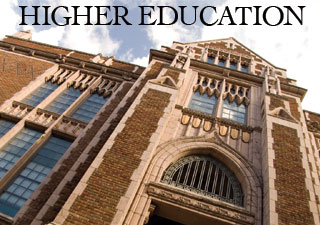Commentary

Reform, Not More Spending, Key to College Affordability
This year’s budget debate has generated several silly schemes, including a few related to higher education funding. But Gov. Rendell’s proposed video poker tax and House Democrats’ ploy to move university appropriations off-budget do raise an important discussion about how the state should finance post-secondary education. While lobbyists have eagerly advocated the popular notion that more higher education spending will increase affordability, this is far from reality.
What many students, legislators, parents and taxpayers don’t realize is that increasing levels of state support has failed to lower tuition rates. Dr. Richard Vedder, director of the Center for College Affordability and Productivity, found that for every dollar of increased state appropriations per student, only 30 cents is used to lower tuition at public universities. In just over a decade, Pennsylvania has increased higher education appropriations by 50 percent, yet tuition continues to escalate faster than inflation and family incomes.
State subsidies fail to lower tuition for many reasons. First, rising levels of financial aid increase the demand for college degrees, allowing universities and colleges to raise tuition rates and still experience enrollment growth. Secondly, government financial aid awards are calculated based on the cost of attendance, which means the students get more subsidies for attending universities with higher tuition rates. This gives colleges a perverse incentive to raise their tuition to collect more government funds. Finally, since colleges and universities are not required to use state subsidies to lower tuition rates, universities are free to spend taxpayer money on extravagant building projects and research project that add little educational value. A poignant example is Indiana University of Pennsylvania’s new recreation center, where students can play 52 golf courses from around the world in simulators.
Funding students, not institutions, should be the priority if the General Assembly is truly concerned about college affordability. Instead of the current system, state subsidies should be directed to students, and awarded regardless of which institution they attend. Ending institutional grants would take the politics out of higher education and allow consumers (the students) to drive which investments universities make. College administrators would need to please enrollees, not lawmakers, to get additional funds.
Short of this, soaring higher education costs can be tempered if the state were to predicate higher education subsidies upon lower tuition rates, and require full transparency on how colleges are using taxpayer funds. Institutional grants should be also be directed to the education of students, not to be used for research or sports facilities. And the state should measure education outcomes-i.e. how well universities are doing with state funds.
Higher education funding is in need of substantial reforms, not a new revenue source to perpetuate the distorted system. Neither new gambling revenue nor higher taxes will improve professor-student interaction or academic standards, or increase the percentage of students earning degrees on time. At some point, higher education-despite it’s advantages-will simply become too expensive.
Granting yearly appropriations to institutions of higher education is not a core function of state government, and it drives up the price tag for a degree. Without reforms, state-funded institutions of higher education will continue to be a growing burden on college students and the taxpayers of Pennsylvania.
# # #
Elizabeth Bryan is a Research Associate with the Commonwealth Foundation for Public Policy Alternatives.